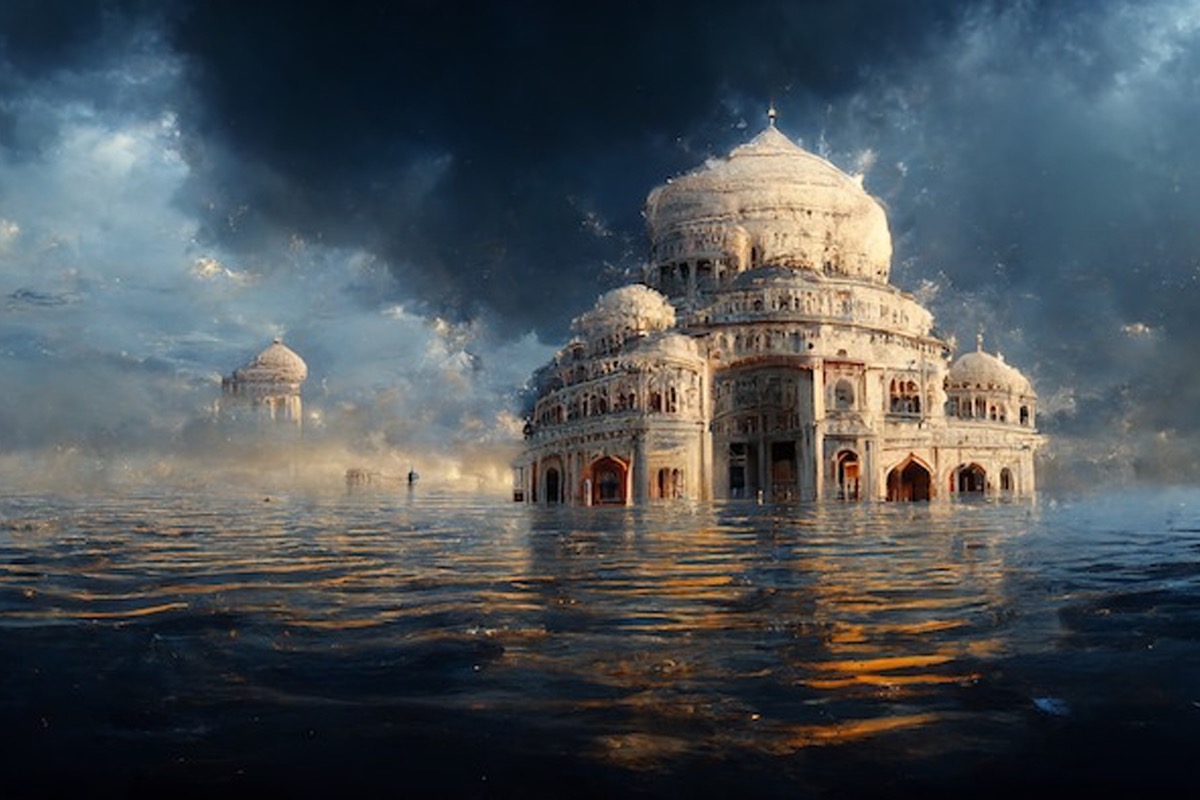As conversations around climate change came into focus in wake of COP27 in Egypt, there is a lot of guesswork on how our cities would look if the world fails to achieve net zero carbon emission by 2050. How would our beautiful Taj Mahal look like?
Well, a recent study conducted using artificial intelligence (AI) by UK-based firm Uswitch paints a grim picture of the future if the world cannot tackle the problem of climate change.
According to the study, the Taj city of Agra will witness widespread flooding as a result of rising sea levels while Dubai, a buzzing world trade centre these days, would face high pollution levels making visibility almost impossible in 2100.
Uswitch, a comparison and switching service, used an AI tool named Midjourney to visualise if the top 20 tourist attractions across the world could be impacted by climate change in the next 80 years if the world community fails to achieve net zero status by 2050.
These places include Agra, Auckland, Barcelona, Beijing, Berlin, Dubai, Edinburgh, Giza, Kruger National Park (South Africa), London, Los Angeles, Mexico City, Moscow, New York, Paris, Rio de Janeiro, Sydney, Tokyo, and Toronto.
The AI tool predicted the risk of flooding in major places around the world, including Agra, Amsterdam and Rio de Janeiro; extreme pollution in famous cities such as London, Barcelona, Berlin and Tokyo; and more extreme wildfires in Los Angeles.
In cooperation with Professor Sam Fankhauser, Research Director of Oxford University Net Zero, the green energy team analysed the emission data from various sectors to show how we can all get to net zero emissions by 2050, as well as reviewing the latest IPCC report to identify how each country will be most affected by climate change in 2100.
While many developed countries have committed to achieving net zero carbon emissions by 2050, India has said it is committed to fully switching to green energy by 2070.
Net green energy experts at Uswitch have analysed the emission data of key sectors to show which industries have the biggest impact, and how we can get to net zero emissions by 2050.
While AI suggests extreme smog due to air pollution, floods and desertification, Uswitch also tasked the tool to envision a best-case scenario for our future should the goal of net zero be achieved.
The more positive results showcased clear skies and the return of wildlife to densely populated cities. By prioritising the eco-credentials of each place, AI predicts much greener areas with less devastating environmental impacts.
Ben Gallizzi, energy expert at Uswitch.com said, “From individual households to the businesses we work for, there are many ways we are contributing to increasing CO2 emissions on the planet. It is important to visualise how the world could look in the next few decades if we fail to start making changes now.”
“And there are some simple ways we can try and reduce our carbon footprint to help prevent things such as species from going extinct, wildfires ruining ecosystems, and rising sea levels,” Gallizzi said.










